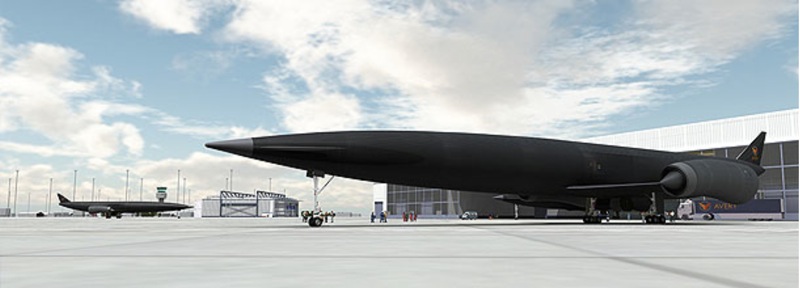Fly me to the moon - on a plane


Engineers in Britain have passed a major milestone in the development of a plane that can fly into space, auguring an airline experience that would replace today's expensive, cumbersome and dangerous rocket propulsion.
The company designing the reusable Skylon "spaceplane," Reaction Engines Ltd (REL), has developed an innovative helium cooling system that would allow the craft to operate safely, the BBC reports.
Skylon would take off and land on a runway, unlike the recently retired Space Shuttle in the U.S., which the National Aeronautics and Space Administration (NASA) launched on the back of breakaway rockets during its 30-year run.
For early flight stages, Skylon uses a rocket engine, but one that sucks in air - oxygen - much like on a jet plane, explains developers REL, of Culham, England.
Other attempts to eliminate expendable boosters have used bulky and costly liquid oxygen. Skylon switches to conventional liquid oxygen fuel once it flies above the atmosphere and loses access to airborne oxygen. At this stage of flight it uses the same engine, which REL calls SABRE, or synergistic air-breathing rocket engine.
"This approach enables SABRE-powered vehicles to save carrying over 250 tons of on-board oxidant on their way to orbit, and removes the necessity for massive throw-away first stages that are jettisoned once the oxidant they contain has been used up, allowing the development of the first fully reusable space access vehicles," REL says. (For more on how it works, see the July 2011 report by SmartPlanet's Tuan Nguyen, and the video below).
A major problem has been that all that oxygen rushing in is too hot to handle, because the oxygen mixes with onboard liquid hydrogen. As a NASA webpage explains, a rocket engine's liquid hydrogen has to stay away from heat, lest it evaporate or worse, explode.
REL has now remedied that, with the helium cooling system.
According to the BBC story, "REL's solution is a module containing arrays of extremely fine piping that can extract the heat and plunge the inrushing air to minus 140C in just 1/100th of a second." The system even includes a counterbalance that prevents frost from building up on pipes, which could have disastrous consequences.
"This is a big moment; it really is quite a big step forward in propulsion," REL founder and chief engineer Alan Bond told the BBC. "We completed the (cooling) program by getting down to -150C, running for 10 minutes. We've demonstrated that the pre-cooler is behaving absolutely as predicted."
REL's next hurdle: It hopes to raise £250 million ($400 million). CEO Tim Hayter said he wants to find the money mainly from private sources as opposed to government funding. Although REL receives money from the UK government, about 90 percent has come privately.
Hayter thinks the £250 million would enable REL to advance the project to a stage at which it could hand it over to a manufacturer.
Then one day we could fasten our seat belts, put our tray tables up and say to Space Airlines Inc., "fly me to the moon."
Okay, that's probably hyperbole, given that the Skylon concept still requires liquid rocket fuel once it exits the Earth's atmosphere.
But there will be ways around that. The old dream of nuclear-powered aircraft might never happen. There could be other solutions. What about antimatter, which was good enough for Star Trek's Starship Enterprise?
Then those of us who can afford it could go see what spring is like on Jupiter and Mars.
Will our cellphones work there?
Images and video from REL website, except for Apollo montage, from NASA via Wikimedia.
More space hopping on SmartPlanet:
- Video: Is futuristic Skylon the Space Shuttle of tomorrow?
- The fleeting fame of commercial space travel
- SpaceX success super charges commercial space race
- First commercial cargo craft launch to space station imminent
- Historic SpaceX shuttle photos
- SpaceX makes history with commercial space flight
- SpaceX’s Elon Musk wants to make trip to Mars as cheap as a house
- SpaceX’s Elon Musk on why we must make life multiplanetary
- Space transportation to feature air launch system
This post was originally published on Smartplanet.com